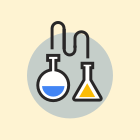A search algorithm is a technical term for how Google sorts through all of the available content on the web to return relevant webpages to a search query, it is often referred to as Google's recipe. Throughout the years, Google has continued to make updates to their algorithm to "perfect" the search results. Below is a list of some the top algorithm updates and a summary description of their intent.
The Featured Snippet Update - January 2020
Update's Goal:
Any featured snippet position will no longer be repeating in the Page 1 organic listings. This affected 100% of all search listings. This is help declutter the results and help users locate relevant information more easily.
How to Recover:
This is one where there isn't much you can do. Instead of ranking twice on page one by having a featured snippet, you are now only ranked once. Attempting to gain more featured snippets is the best way to increase your presence on the SERP.
Read our earlier blog post on featured snippets and how to optimize your pages.
The BERT Update - began October 2019
Update's Goal:
BERT was designed to make search results more accurate by being able to understand longer, more conversational queries. This is the biggest update to the algorithm in the past 5 years. Impacts were felt in both search rankings and featured snippets.
How to Recover:
Continue to focus your content on E-A-T guidelines. Ensuring that content is useful and targeted toward your audience will be rewarded. Google doesn't want you writing for search, they want you writing to best serve your reader.
Read our earlier blog post for more information on the BERT update.
Read more about E-A-T guidelines in our earlier blog post.
The Speed Update - July 2018
Update's Goal:
The Speed Update will use page speed as a ranking factor for mobile searches. The goal of this update is to offer mobile users a better experience while browsing, which will lead to more valuable interactions for website owners.
How to Recover:
Utilize the tools below to check how the speed of your site compares to your industry average:
A good place to start improving the speed of your site is with optimizing your images. There are online resources available that reduce the image size, while maintaining the level of quality. You may also want to consider implementing Accelerated Mobile Pages (AMP), which utilizing various technical approaches to insure that a page will load its content almost instantaneously.
Read our earlier blog post for more information on The Speed Update.
Possum - September 2016
Update's Goal:
Local results are now geo-targeted.
This update impacted the local results and Google Maps results. This update helped the businesses who were located just outside of city limits, rank for keywords that contain the nearby city's name.
How to Recover:
The importance of the physical location of the individual searching now matters more for the individual search results. To avoid showing the same business multiple times in the search results, Google used to filter listings based on duplicate phone numbers, now Google is also filtering businesses based on duplicate addresses.
Accurate local listings were already an important aspect of off-page SEO, but this emphasizes the possibility of a customer finding your business through one of these directories. Fortunately, there are many different services that are available to help manage directories.
Mobile Friendly Update - April 2015
A.K.A: Mobilegeddon / Mobilepocalyse / Mopocalypse / Mobocalypse.
Update's Goal:
Google has continued to push the mobile movement with the most recent statistic of: 79% of consumers use their phones for research. Therefore, this update will boost mobile-friendly pages in the search engine results page (SERP).
How to Recover:
Test if your Website is Mobile Friendly
If your website is still not mobile friendly, it is time to make the switch. In November 2016, Google warned website owners that a Mobile-first Indexing would soon be a reality, as more users were searching from their mobile phones.
Pigeon - July 2014
Update's Goal:
Ties together the local search results with the traditional web search ranking signals, and improves the visibility of local directory sites.
How to Recover:
It is unlikely that your website was penalized from this update. However, this update reminds business owners of the importance of local directories. As ranking signals tend to be higher for directory sites, users may be more likely to organically find your website on a local directory page. Accurate local listing were already an important aspect of off-page SEO, but this emphasizes the possibility of a customer finding your business through one of these directories. Fortunately, there are many different services that are available to help manage directories.
Hummingbird - September 2013
Update's Goal:
Improves Google's understanding of the searcher's intent by changing the search results to better match the entire searched phrase instead of particular keywords.
How to Recover:
It is important to consider the entire concept when writing copy, instead of focusing on a single keyword. As you may notice throughout this post, high-quality, original content is a very important aspect to search engine results page (SERP) ranking.
EMD Update - September 2012
A.K.A: Exact Match Domain Update
Update's Goal:
This update reduced the visibility of poor quality sites, even if their domain names matched the searched terms.
How to Recover:
Say it with me: High-quality, original content. Once again, one of the best ways to recover from this update is to add high-quality, original content to your website.
Penguin Update - April 2012
Update's Goal:
To remove sites deemed spam from search results.
How to Recover:
First, ensure that Google has not previously contacted you about potential spam on your site, you can check for these messages in Google Search Console. If you have not received any warning messages, improve your website by adding high-quality, original content to your pages (are you starting to see the trend).
Payday Update - June 2012
Update's Goal:
Clean up the SERP for heavily spammed queries such as "Payday Loan"
How to Recover:
Content, content, content. High quality, unique content will help to keep your site from being flagged as spammy.
Top Heavy Update - January 2012
Update's Goal:
This update reduced the visibility of websites that were "top heavy" with ads.
How to Recover:
Remove excess ads from your site, and make sure that you have high-quality, relevant content "above-the-fold."
Panda Update - February 2011
Update's Goal:
To filter content that lacks substance from top search results.
How to Recover:
The Panda Update is one of the most talked about algorithm changes because of the large impact it had on search results. Fortunately, the Panda Filter re-evaluates sites periodically; therefore, it is possible to improve your sites content and escape the negative impacts. If your site was negatively impacted by the Panda update, then you should most likely focus on your on-site SEO; including Content, Content, Content. Add high-quality, original content to your pages, and consider adding no index tags to pages that have very thin content.
Pirate Update - August 2012
Update's Goal:
Filter sites from search engine results page (SERP) that have copyright infringement reports. A site will be effected if there are a multiple DMCA "takedown" requests filed.
How to Recover:
It is possible to file a counter-challenge to negate these requests.
View Google's Transparency Report
Sources:




